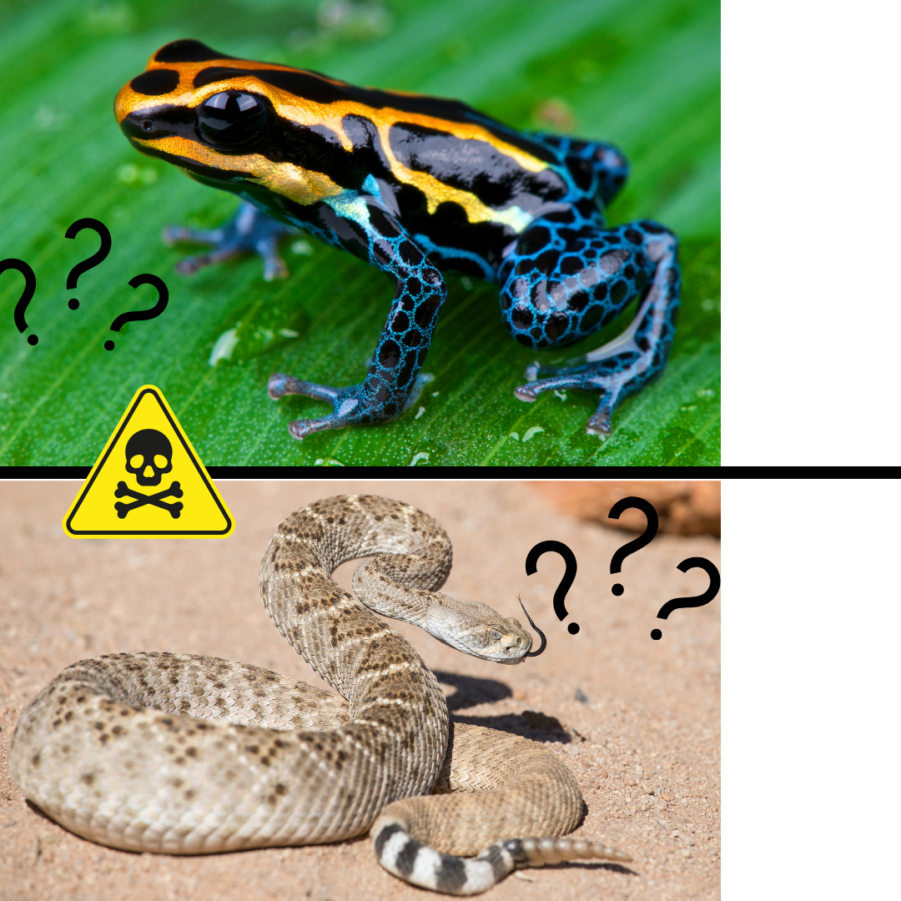One of the first questions I get from people asking for help with species identification is, “is it poisonous?”. I frequently get pictures of bugs that turn up in people’s houses or snakes spotted in gardens from people with just that concern. If you’ve done any reading up on animals and plants that might pose a danger to you or your pets, you may have run into the terms venomous and poisonous being used throughout. Do these terms mean the same thing? Is there a difference between venomous vs. poisonous? In this Naturalist Answers post, let’s explore this topic and some of the organisms it brings to mind.
Do venomous and poisonous mean the same thing?

The short answer is ‘no’! However, venomous and poisonous organisms have one important thing in common: both produce or contain in their bodies various chemicals that can be harmful or toxic to other living things. The key difference is this:
- Venomous animals produce toxic chemicals which they intentionally deliver to the body of another animal to cause harm.
- Poisonous organisms (note: this includes plants, fungi, and other non-animal wildlife!) produce or contain toxic chemicals that will harm other organisms that are exposed to them. Importantly, poisonous animals don’t have a mechanism for purposely introducing toxins into another organism’s body.
Why are poisonous and venomous animals often colorful? Read about “warning colors” here!
What are some examples of venomous animals?
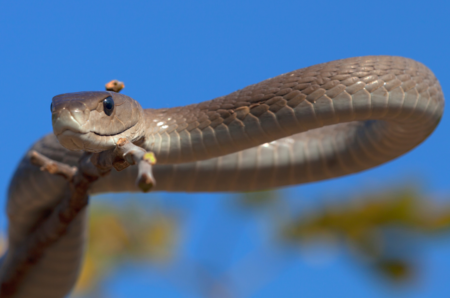
Animals with stingers, fangs or other appendages meant to deliver toxins can be venomous if they also have a gland to produce those damaging chemicals. These chemicals, called venom, can vary widely in their effects and in their dosages, which depend on the size of the glands producing them and the degree of control the animal has on how much it doles out at a time.
Venoms can cause pain, attack the blood, heart, nerves, or other specific tissues of the body, and can cause symptoms like shock, paralysis, and of even death.
Common examples of venomous animals

- Spiders. The vast majority of spiders use some sort of venom, delivered using fangs, to subdue their prey.
- Venomous snakes. In most parts of the world, only a small fraction of snake species are venomous (with a notable exception being Australia!). However, a bite from most venomous snakes can be dangerous, and some species can be deadly.
- Scorpions. Related to spiders, these fearsome arachnids have stingers on their long, segmented tails. They use these stingers to subdue and kill prey as well as to defend themselves from becoming a meal.
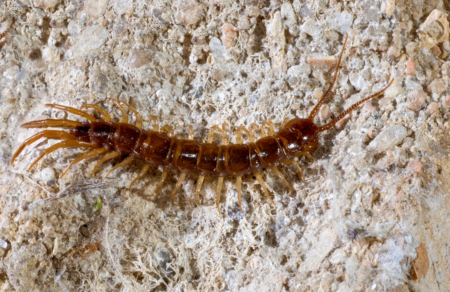
- Centipedes. Although often confused with poisonous millipedes, centipedes are aggressive, venomous predators. They use their modified, stabby front legs like jaws, injecting prey with powerful toxins that can incapacitate them. These forcipules are also what gives centipedes a nasty “bite” if handled!
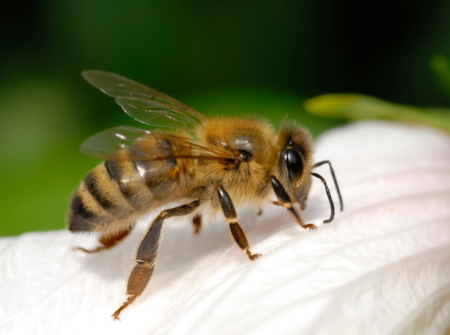
- Bees, wasps, and ants. Many insects in the order Hymenoptera have modified egg-laying organs that function as stingers. This group includes some of the most painful stings in the world! Because their venom is delivered by a female reproductive organ, male ants, wasps, and bees are incapable of stinging.
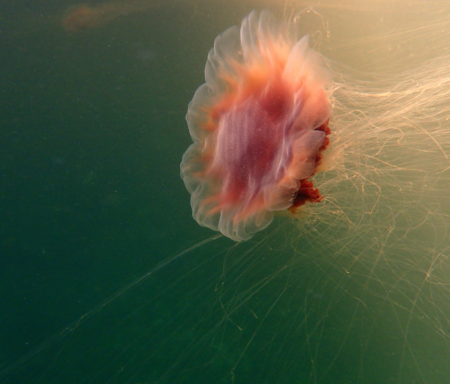
- Jellyfish. Along with their cousins the sea anemones and corals in the phylum cnidaria, jellyfish deploy their venom using stinging cells on their tentacles. Specialized cells called nematocysts shoot microscopic, barbed harpoons into unfortunate prey or predators, delivering a dose of venom.
Do daddy long legs have some of the most powerful venom in the world?
What are some examples of poisonous organisms?
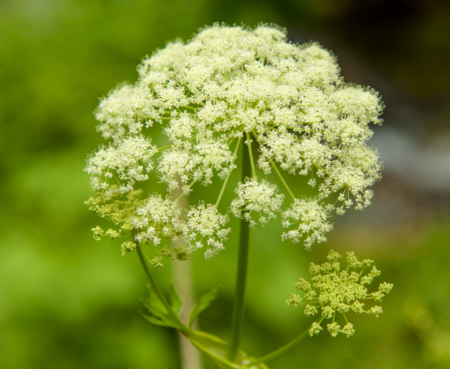
Many organisms produce toxic compounds, or store them up in their bodies, to act as a final line of defense against predators. Any predator that eats, or tries to eat, that animal, could end up with a nasty surprise. If it’s lucky, it might spit out or vomit up its poisonous meal, but it could also end up dead! To ensure the effectiveness of these deterrents, especially before a predator decides to try them out firsthand, many poisonous organisms use aposematic coloration to advertise the potential danger. Their message: stay away or you’ll be sorry. Do not touch!
- Poisonous plants, which produce chemicals like alkaloids that are dangerous if ingested. Milkweed is a great and widespread example!
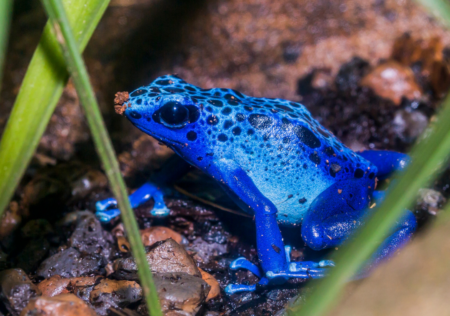
- Poison dart frogs, which include some of the most poisonous animals in the world.
- Insects, some of which can produce their own poisonous chemicals, and others which “steal” theirs from poisonous plants

- Fungi. Many species of mushrooms and other fungi produce toxic compounds to prevent unwanted animals from feeding on them. This is part of why mushroom foraging requires a lot of experience and careful consideration!
What are some weird examples of poisonous and venomous species?
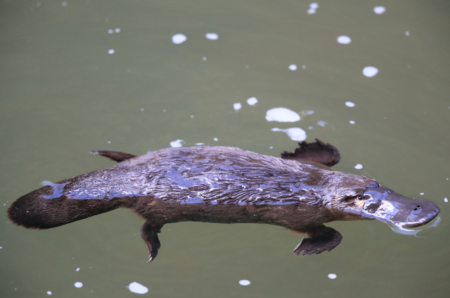
No discussion of venomous vs. poisonous organisms would be complete without highlight some of the strangest examples of chemical warfare in nature. While you may be familiar with many of the common examples above, here are some really whacky species that break the mold:
- The hooded pitohui (Pitohui dichrous), a tropical bird of New Guinea, have powerful neurotoxins in their skin and feathers. Scientists discovered this the hard way–by feeling numbness and tingling in their hands when handling museum specimens of these birds! Their potent poison is chemically related to what’s found in the skin of poison dart frogs.
- The platypus (Ornithorhynchus anatinus), one of Australia’s weirdest animals, also carries the distinction of one of the world’s few venomous mammals.
- Blue-ringed octopi (genus Hapalochlaena). The four species of blue-ringed octopus are small, relatively shy mollusks that occur in the Indian and Pacific oceans. Most notorious as one many dangerous animals in Australian waters, these octopi have extremely dangerous venom. A tiny, sometimes painless bite can deliver enough of their fearsome toxic cocktail to kill a full-grown human being in a matter of minutes.
- Australian stinging tree (Dendrocnide moroides). The stinging tree, known to many as the world’s most painful plant, is an impressive venomous tree. Tiny, fragile spines on the leaves of this tree can inject a potent pain-inducing toxin. People describe the tree’s sting as a combination of being set on fire and electrocuted, and the pain can continue for days to weeks!
Thanks for reading about venomous vs. poisonous wildlife!
If you enjoyed this post, please support Gulo in Nature by sharing with friends and following us on Social Media. If you have other topics you’d like to read about on the blog, reach out using our Contact Page.

